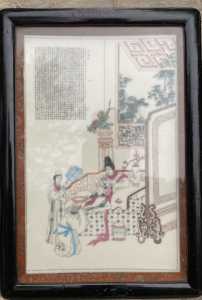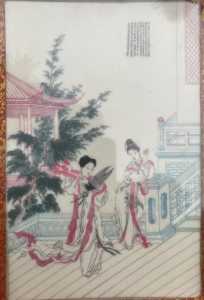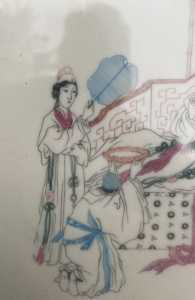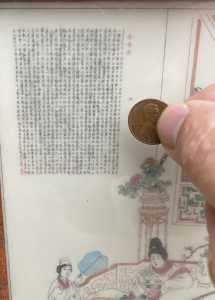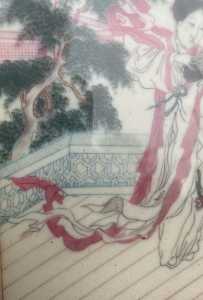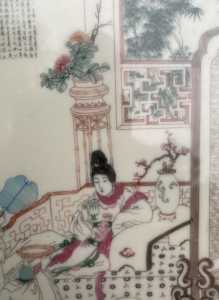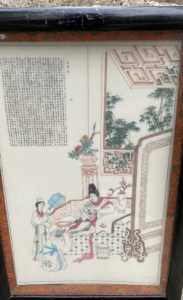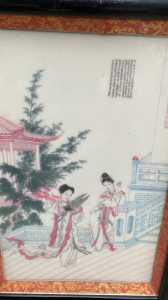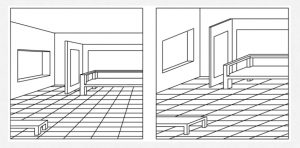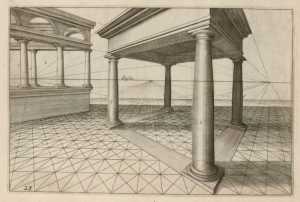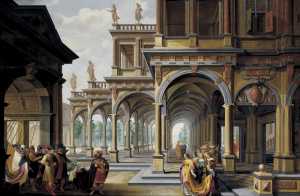The Chinese and Asian Art Forum. For Fans, Collectors and Dealers.
 Basic Rules For the BidAmount Asian Art Forum: Talk about whatever you want. You can even discuss and offer things that are for sale if they are authentic. Maximum image file size per post is 2 MB. Images of 700pxl x 700pxl are optimal if saved at a medium resolution. Be respectful of others and enjoy yourself. Click the YouTube link for a brief tutorial on using the forum. You can also EMBED Videos by cutting and pasting from You-Tube, Vimeo etc.
Basic Rules For the BidAmount Asian Art Forum: Talk about whatever you want. You can even discuss and offer things that are for sale if they are authentic. Maximum image file size per post is 2 MB. Images of 700pxl x 700pxl are optimal if saved at a medium resolution. Be respectful of others and enjoy yourself. Click the YouTube link for a brief tutorial on using the forum. You can also EMBED Videos by cutting and pasting from You-Tube, Vimeo etc.
NOTE: To post an item or add a new post, click open the category title from the FORUM LIST, and CLICK the Blue ADD TOPIC button.
Dear members I want to share 2 extremely rare carved porcelain plaques for view to study. One I believe could be from the Imperial work shop. I’m sorry about the picture quality do to them being in conservation boxes the glaze is lead glass from the 19th century so it’s a little foggy.There are particles from the paint loss on the carving. I believe the plaques are older than the frames. I have found no comparisons but a article on these pieces. The article states that these plaques were produced in the Imperial workshop during the Qainlong period up until the end of the 19th century the article said it took great amounts of time to carve these plaques the process of carving was done in 3 steps after carving than the color was added this was done by added about 8 layers
. It’s mind blowing that the writing is all carved. The article also mentions that very few from the 19th century are in circulation as most are in private collections or museums. I hope you enjoy them as much as I do.
I have to say I share Birgit's misgivings. I find the blue very odd, it is more of a Seto blue. The breaks in the black lines of the clothes seem unnecessary and I agree the perspective seems strange for allegedly old Chinese pieces.
May I ask how you can tell it is lead glass - I am genuinely interested to know.
-
The Chinese, in common with the rest of mankind, have had the experience on which the non-Euclidian definition of parallel lines and the Western method of projection is based, and in their landscapes they represent distant things as smaller than near things. In their drawing of buildings and furniture, however, they make the lines that are parallel or equidistant in the object, parallel or equidistant in the drawing of the object. In a picture of the interior of a room, for instance, the walls are by measurement the same height throughout their length. The lines of tabletops are exactly parallel. But the definition of parallel which we must adopt here is that of Euclidian geometry ; that parallel lines are lines that never meet.
In the West, perspective is achieved by directing the lines of the drawing toward two hypothetical vanishing points, with the result that lines parallel or equidistant in nature are convergent on the picture plane. This type of projection depends upon the non- Euclidian definition of parallel lines as lines that meet at infinity. The projection of a point at infinity in a line is a finite point, so the meeting point of the parallel lines becomes projected as a finite point known as a vanishing point.
Vermeer and the Art of Linear Perspective:
Hey guys thank you for your perspectives. Lol. These plaques are authentic just keep in mind that the entire painting is carved every line and detail. The writing is the size of a rice grain. No one in modern time could carve writing in porcelain this small the one plaque is 900 characters long. Julia I have experience with glass and the lead glass breaking down is visible. I will get you a picture. Glass was also made differently it has a different feel.
Porcelain carving is derived from jade carving and stone carving. It first appeared in the Song Dynasty, and prospered in the late Qing Dynasty. By carving, the sleek surface of porcelain is engraved with different patterns or poem inscriptions or both, instantly becoming three-dimensional, and this, to some extent, injects spirit into the porcelain.
There are three kinds of skills in the carving of porcelain. The first one is chiseling. An artist normally grips a small cuboid wood block with two adjacent fingers as a hammer, and then with it knock the top of the diamond chisel rhythmically. Through different levels of strength used during chiseling, varied shades and patterns can be created.
The second kind of skill is carving. After outlining, the artist starts carving the patterns on the surface of the porcelain with a diamond knife.
The third kind of skill is engraving, mainly used for outlining the patterns. For example, when an artist wants to carve a human figure on the porcelain, he first engraves the outline and clothes before chiseling or carving for further refining.
After the carving process is completed, the artist will fill in the patterns with color. This step might be repeated several times for a natural, clean, and detailed result. Normally, a finished piece might need several layers of coloring.
Different lines are used as the basis to present the appearance and spirit of the pattern to be carved. The carved images are then colored with Chinese ink or colorful pigments. The clear contrast caused by the difference between the smooth glaze and all the harsh carved tracks give the porcelain new values in the eyes of collectors.
Today, not many pieces of carved porcelain from the Qing Dynasty remain. This is mainly due to two reasons. First, this craft requires advanced skills as porcelain is hard and brittle with a slippery surface. Second, porcelain carving combines painting and carving, which means to finish a single piece requires a very long period of time and much effort.
Interesting plaques. The perspective looks axonometric to me (caveat: I teach western art history and I am not an expert in Asian art).
The details are beautiful. I have no idea about the age but they look amazing. I would submit them to Peter for appraisal.
Do you know the subject matter? Are they from the Western Chamber?
@lotusblack Are you sure these are porcelain? Carved ivory plaques with miniature calligraphy is well known in the Republic period, and sure look similar to your plaques.
https://www.liveauctioneers.com/item/9903491_634-chinese-ivory-calligraphy-plaque-landscape-with
@lotusblack I may be missing the point, how old do you think these are exactly? Do you think they are possibly Republic or do you think earlier, nineteen twenties, thirties or even later glass could appear wavy by now. What does the backside of the frame look like? Of course, they could be newer or older than the frame. Sharon
My issue with perspective wasn't parallel lines, although nice to be reminded of vanishing points, seems a long time since I have thought of them. Happy memories of children's homework! 😊
I have just noticed however that the picture is distorted by camera angle which actually makes the top wider and bottom narrower, which doesn't help but there were other little things that seemed clumsy that can't be explained by that. Although I accept I may not be giving enough credit to it having been carved. I have to say, now Tim has mentioned it, there is a distinct resemblance to ivory in the shade and construction. I also think it has a Japanese look in the colour and faces - that is just a casual observation, no more.
I shall look forward to hearing more about the glass. I tend to take glass for granted and not give a thought to its components which seems rather a shame given how old the technique is.
Thanks guys for all your interest. Tim When I purchased these I actually thought it was plastic. Lol until the label that was on the sales tag identified them as porcelain. I was not believing this so I pulled out my magnaviewer. Luckily the center of one of the plaques was exposed enough on the boarder to see the edge it is 100 percent porcelain. I haven’t shown the backs yet but I will soon. As for dating I’m thinking 19th century but that is a guess. The carving with the small writing not the 900 character is losing outline paint in the shoulder area so the porcelain is exposed. Julia the picture angles are not the best trying to compensate for debris foggy glass and paint or ink loss. I am not comfortable with remove from boxes just yet.
@lotusblack Well, it would be great news if they are porcelain, not ivory, if you plan to resell.
However, in collecting Chinese art , it is quite rare to find a piece of unique design and materials… impossible I’d say.
How about you shine a bright light on the plaque and take a clear close up, then post?
If ivory, they are still quite remarkable works of art… just more challenging to sell.
Thanks for visiting "The BidAmount Asian Art Forum | Chinese Art"
If you sell on eBay, or have a shop feel free to post images and descriptions and links.
Check back often for discussion about the latest news in the Chinese art and antique world. Also find out about the latest Asian art auctions at Sotheby's, Christie's, Bonhams and Tajans.
Auction results for: fine porcelain, ceramics, bronze, jade, textiles and scholar's objects. As well as Japanese, Thai, Vietnamese and other Asian cultures.
Thank you,
Peter Combs
Topics and categories on The BidAmount Asian Art Forum | Chinese Art
Kangxi vases, Kangxi dishes and chargers, Kangxi ritual pieces, Kangxi scholar's objects, Qianlong famille rose, Qianlong enamels, Qianlong period paintings, Qianlong Emporer's court, Fine porcelain of the Yongzheng period. Chinese imperial art, Ming porcelain including Jiajing, Wanli, Xuande, Chenghua as well as Ming jades and bronzes.
The BidAmount Asian Art Forum | Chinese Art
A free Asian art discussion board and Asian art message board for dealers and collectors of art and antiques from China, Japan, Korea, Thailand, Cambodia, Vietnam and the rest of Asia. Linked to all of the BidAmount Asian art reference areas, with videos from plcombs Asian Art and Bidamount on YouTube. Sign up also for the weekly BidAmount newsletter and catalogs of active eBay listing of Chinese porcelain, bronze, jades, robes, and paintings.
The art of calligraphy - and for the ancient Chinese it certainly was an art - aimed to demonstrate superior control and skill using brush and ink. Calligraphy established itself as one of the major Chinese art forms during the Han dynasty (206 BCE - 220 CE), and for two millennia after, all educated men were expected to be proficient at it.
The Museum’s collections of Asian art span nearly five millennia and encompass the cultures of China, the Himalayas, India, Japan, Korea, and Southeast Asia. In 2007, the Museum launched an initiative to create dedicated galleries for the collection, beginning with a gallery for the arts of Korea ...
Chinese art is full of symbolism, in that artists typically seek to depict some aspect of a totality of which they are intuitively aware.
China Online Museum is the finest online museum of Chinese art. It features Chinese calligraphy, painting, ceramics, bronzes, carving, and other artworks.
Chinese Ceramics & Works of Art. Overview Upcoming auctions Contacts Auction results ... Christie’s sales of Chinese ceramics and works of art showcase centuries of Chinese history. Held throughout the year in London, New York, Paris and Hong Kong, they attract a wide audience of collectors and connoisseurs vying for pieces as diverse as ...
Explore Asian Art Week. Contact the Specialist Department. Chinese Paintings ... Senior Specialist, Head of Sale. [email protected]. Tel:+1 212 641 5760. Bid in-person or online for the upcoming auction:Fine Chinese Paintings on 10 September 2019 at New York. Bid in-person or online for the upcoming auction:Fine Chinese Paintings on 10 ...
Discover an abundance of must-see art from all corners of a vast continent at Christie’s NY Asian Art Week. From contemporary classical and Chinese paintings to works with exemplary provenance from the Art Institute of Chicago, our Rockefeller Paza galleries will be full of ancient treasures and contemporary masterworks in a salute to the vibrant arts of Asia.
Sold to benefit The Art Institute of Chicago’s Asian Art Acquisition Fund, the sale features 84 lots with a focus on Ming and Qing porcelains, and offers a rare insight into the taste for collecting Chinese ceramics and works of art in the Midwest from the end of the 19th century through the 1980s. Highlights include two Wanli wucai garlic-head vases, a Qianlong mark and period, blue and ...
Specialist, Chinese Paintings, Christie's London Dr Malcolm McNeill is a Specialist in Chinese Paintings at Christie’s, based in London. He previously worked as an assistant curator of the Chinese collections and the Victoria and Albert Museum in London, as a researcher at the British Museum, and as a translator and tour guide at the National Palace Museum in Taipei.
The Christie's Education 2020 Conference: The Chinese Art Market 18 Jun 2019 Christie’s Education is delighted to announce our first international academic conference in Asia which will take place in Hong Kong from 26-27 November 2020 at the Hong Kong Convention and Exhibition Centre and will run in parallel with Christie’s Hong Kong Autumn Auctions.
The summer Chinese Art sale in Hong Kong will feature works of art from several private collections, including Qing porcelains and textile from the collection of the legendary Chinese art dealer A. W. Bahr (1877–1959), fine gilt bronze Buddhist sculptures from an old Hong Kong collection, an East Asian collection of Qing dynasty wine cups and jades, and a Japanese collection of Song ceramics ...
Sotheby's Chinese Works of Art Department holds two auctions each year in London, New York, Hong Kong and Paris.
Chinese Art - View Auction details, bid, buy and collect the various artworks at Sothebys Art Auction House.
With more than 340 Chinese works of art dating from the Neolithic to the Republic periods, highlights of this sale include a selection of Qing Imperial monochromes from the collection of Arnold and Blema Steinberg, early ceramics from the Art Institute of Chicago and Chinese porcelain and works of art from the collection of Henry Arnhold.
Results: Sotheby's Asia Week achieved $52.4 million in six strong auctions, exceeding pre-sale estimates. With 76.5% of lots sold and 60.3% of lots surpassing high estimates, the Asian art sales at Sotheby's indicate continued collector interest in the finest works of art from China, India and and the Himalayas.
Today's sale of Important Chinese Art will proceed as planned with sessions at 10 AM and 2 PM EDT. Sotheby's will be monitoring the weather conditions throughout the day and will be available to coordinate alternative bidding options should conditions make it difficult for clients to attend the auction in person.
Bonhams Chinese Art department is renowned for offering the finest works of art representing the richness and breadth of China's artistic heritage, particularly Imperial porcelain, white and spinach green jades, cloisonné and Buddhist art. Specialised international auctions are held globally, including London, Hong Kong and San Francisco.
Bonhams : Chinese Works of Art We use cookies to remember choices you make on functionality and personal features to enhance your experience to our site. By continuing to use our site you consent to the use of cookies. Please refer to our privacy and cookie policies for more information.
Bonhams Fine Art Auctioneers & Valuers: auctioneers of art, pictures, collectables and motor cars. We use cookies to remember choices you make on functionality and personal features to enhance your experience to our site. By continuing to use our site you consent to the use of cookies. ... Chinese Art (US) General enquiries
Bonhams : Fine Chinese Art We use cookies to remember choices you make on functionality and personal features to enhance your experience to our site. By continuing to use our site you consent to the use of cookies. Please refer to our privacy and cookie policies for more information.
Bonhams Fine Art Auctioneers & Valuers: auctioneers of art, pictures, collectables and motor cars Bonhams : Asian Art We use cookies to remember choices you make on functionality and personal features to enhance your experience to our site.
Bonhams are international auctioneers of fine Chinese and Japanese art. We specialise in rare Imperial and Export Chinese ceramics and works of art, as well as Japanese ceramics, fine and decorative works of art from the Neolithic Period to the 20th century. View on map
Bonhams Fine Art Auctioneers & Valuers: auctioneers of art, pictures, collectables and motor cars. We use cookies to remember choices you make on functionality and personal features to enhance your experience to our site. By continuing to use our site you consent to the use of cookies. ... Asian Art Bonhams. Work. 22 Queen St.
